
14 minute read
WHAT IS THE WORLD’S GREATEST RACE?
ANDREW HAWKINS
It was a debate that was supposed to be solved by the pattern. Group 1 races would be the elite events, those rich events with a long and storied history, coveted by all. Group 2 races would be the next rung down, followed by Group 3 contests and so forth.
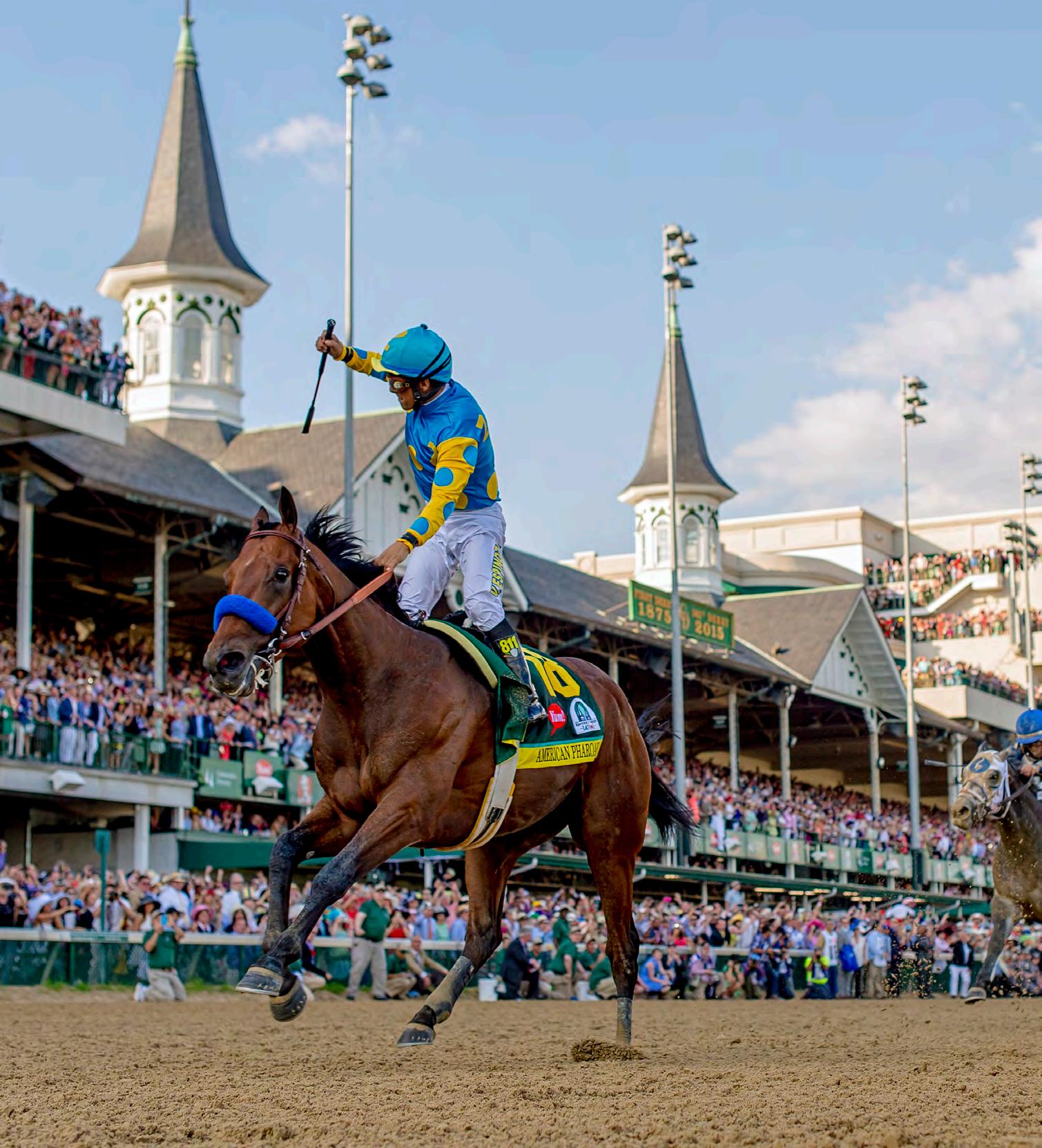
American Pharoah Wins the Kentucky Derby
However, the pattern has been exposed somewhat by the globalisation of racing, with different standards applying in different jurisdictions about what constitutes a top-level event. Complicating matters has been the arrival of new bigmoney events onto the international racing scene. Races like the Breeders’ Cup Classic in 1984, the Magic Millions Classic in 1987 and the Dubai World Cup in 1996 were forerunners to the current influx of bold new races, like the Pegasus World Cup, The Everest, the Golden Eagle and the Saudi Cup. Where do these rich contests stand alongside those that have been run for the best part of two centuries? With the world a shrinking place and technology allowing for greater access to the international racing scene, opinions on what stands atop the global racing scene are many and varied. In years gone by, it would be a simple matter of parochialism. Those in Australia would have said the Melbourne Cup was the pinnacle; in France, the Prix de l’Arc de Triomphe. For the Brits, it would be the Derby, or for those across the Atlantic, their equivalent, the Kentucky Derby. Now, it’s far from straightforward. So what makes a great race? Is it prize money? Prestige? History? World rating? Or is it something more intangible? And if those factors make a great race, which is the greatest of them all? It’s a polarising debate in which there are many different opinions. Here are just some of the perspectives from those in the industry.
PRIX DE L’ARC DE TRIOMPHE
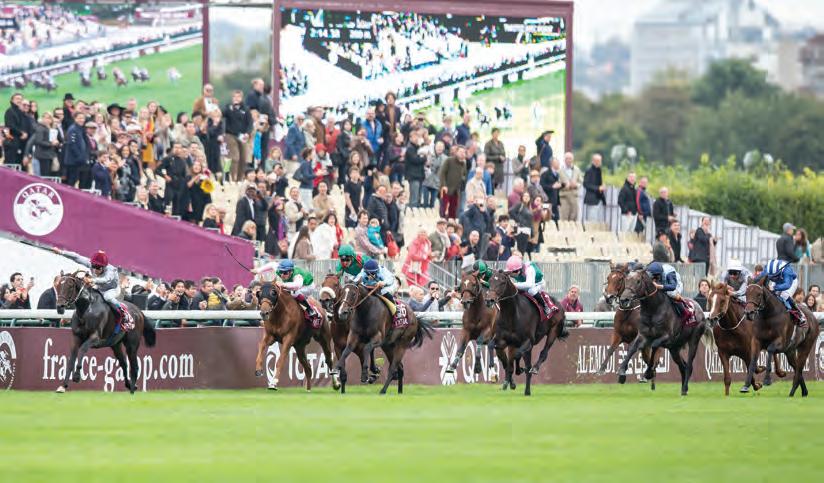
Prix De L’arc De Triomphe
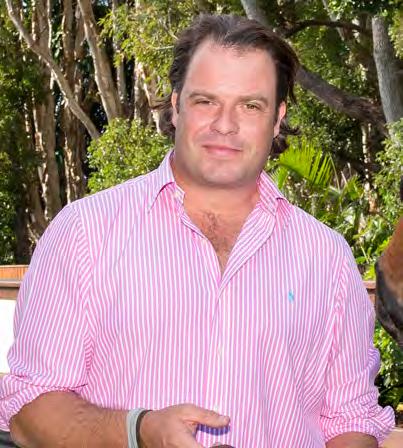
Tom Magnier
THE BREEDER
Few operations are caught between the allure of history and the importance of relevance like Coolmore Stud, as they aim to shape the next generation of champions. Their Australian chief Tom Magnier – in racing parlance, a blueblood, as the eldest son of Coolmore supremo John Magnier and grandson of the legendary Irish trainer Vincent O’Brien – admits that some of the northern hemisphere’s great races come immediately to mind when considering the world’s premier events. “The Derby at Epsom has always been the one race that my family has traditionally valued above all others,” says the younger Magnier. “Described by Tesio as the race on whose winning post the existence and development of the thoroughbred has depended, the Derby, after all, gave us Galileo, the greatest sire in the history of turf racing. The 2000 Guineas, too - both English and Irish - have always been races of the greatest importance to our family and provided the springboard for a stallion like Galileo’s own sire Sadler’s Wells, as well as sire-sons of Galileo like Frankel, Gleneagles and Churchill, the last-named a horse whom we consider an ideal prospect for Australian conditions. “The American Triple Crown and Breeders’ Cup races have similarly shaped the destiny of the American thoroughbred and are also hugely important to us, sources as those races are of sires like American Pharoah and his Coolmore barnmate Justify.” However, Magnier – who has called Australia home since the turn of the century – has also been one of the best identifiers of talent as a new wave of breedshaping races have come to the fore down under. “My family and I value primarily the races that ‘make stallions’ and so I’d have to nominate the leading sire-making races in this country,” Magnier says. “Races like the Golden Slipper, which not only ‘made’ Danehill’s name here but also gave us Pierro and Vancouver; the Coolmore, which gave us our idea of Fastnet Rock’s true successor in Merchant Navy; and Australia’s traditional weight-for-age championship, the Cox Plate, which immortalised horses like So You Think and, of course, Winx, whom we raised at Coolmore. In this context, though, I’d have to mention The Everest as well.
“Australia has now, in our opinion, the most viable racing and breeding economy anywhere in the world. And this is due, in no small measure, to the wonderful prize money on offer here, which in turn leads to greater sales returns and a thriving breeding industry.” Indeed, Magnier recognises that the pattern has struggled to adapt to the influx of new big-money races like The Everest, with their quality yet to be fully assessed by the Australian Pattern Committee. “Great prize money incentive races like the Magic Millions Classic and now The Everest have captured the racing public in an extraordinary way,” he says. “They are races that owners and breeders now target and covet even over and above many traditional Group One contests because, in addition to their prize money, they, like the Golden Slipper, showcase the epitome of the Australian thoroughbred - the attributes of precocity and speed for which the Australian thoroughbred is renowned worldwide. “This is why winning The Everest with Rubick’s son Yes Yes Yes was so exciting for us - up there with any race we’ve ever won anywhere in the world. It may not - yet - be a Group One race but we consider it, for the number and quality of Group One winners that Yes Yes Yes beat, in a realm of its own, almost ‘Super Group One’ class, if you like.”
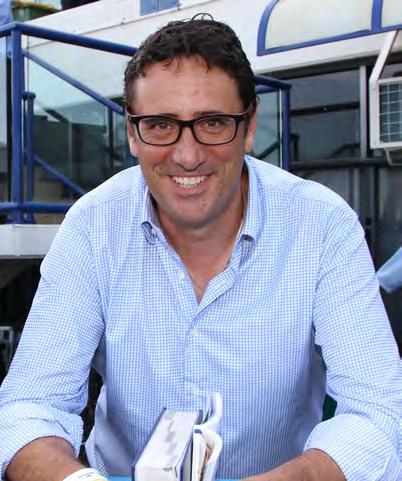
David Raphael
THE MEDIA
The victory of Yes Yes Yes in The Everest was also celebrated by David Raphael, the man who purchased his sire Rubick for $460,000 from the 2013 Magic Millions Gold Coast Yearling Sale. Now more prolific as a bloodstock agent, Raphael first came to public prominence as a racecaller and television personality and few have covered both the Australian and international racing scenes to the same extent. “I’m like a swinging voter when it comes to rating the world’s best race as the best clash, or the collection of in-form horses, is the key factor,” he says. “Weightfor-age more often seems to be the common factor that brings the best together, along with a pool of cash. I love to see the internationals clashing and I think this is the best promotion of any racing event.
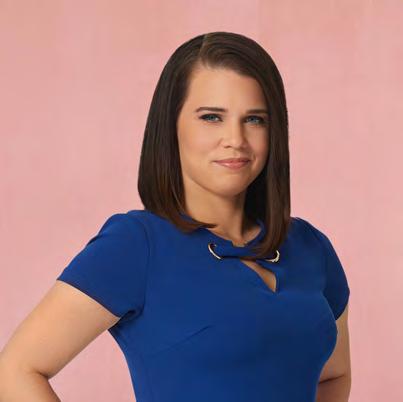
Candice Hare
Raphael notes that the recent addition of big-money races like The Everest and the Golden Eagle is not a new phenomenon, even if prize pools have reached an extraordinary high over the past couple of seasons. “Restricted big-money events are not new at all, there have been plenty throughout history,” says Raphael. “It is just the level that they have reached in the past two years that is attracting all this attention. They are a huge and relatively attractive target to aim at when buying horses. And, as we saw with this year’s Everest, when the best horses are in form and they clash, these races are elevated. “In the end, quite simply, a great race has the best horses taking on one another to determine who is the best. The world’s greatest race is the event that attracts the best horses at the time of running. That can change year on year.” This sentiment is echoed by one of the rising stars of the international racing scene, Candice Hare, global racing analyst for American television network TVG. “Great races are great when they have the ability to bring the very best horses against each other,” she says. “This is not necessarily G1s because to be frank, there are too many of these on the international calendar and, many times, the option to duck other competitors is there. We see that a lot here in the United States, there are so many opportunities for horses that we rarely see depth. When depth is there, the race is elevated. Take a race like The Everest, for example; though it doesn’t have black type, its ability to attract the world’s best sprinters clearly stamps it as a great race in my eyes.” For Hare, the globalisation of horse racing has allowed for a greater understanding and appreciation of what is on offer across the world. “Most Americans would, in the past, have leaned towards the Kentucky Derby as the world’s best race, not just because of where it’s located but because it’s the race we are most familiar with and the race for which we see the most coverage,” Hare says. “However, we live in a time when it’s easier than ever to have access to global form and replays. For that reason, I think general opinion in these parts has swayed in the direction that I personally feel it should have been all along: to the Prix de l’Arc de Triomphe. “Not only is it a race which has history and prestige on its side, but more importantly in my eyes, it has a history of being great, of bringing the world’s best horses together and of being the pinnacle in the careers of many of the best horses of all time.”

The Epsom Derby
Raphael has also covered many of the world’s top races, especially from his time as the premier announcer for the short-lived Emirates World Series Racing Championship, held between 1999 and 2005. “The Japan Cup is a favourite of mine, plus the Hong Kong events of course,” says Raphael, whose call of the 2000 Hong Kong Mile stretch drive between ‘the mare of the world’ Sunline and ‘the horse of Hong Kong’ Fairy King Prawn still receives plaudits to this day. “It’s been interesting to watch the development of The Everest and, in my opinion, it deserves no negative comment. It’s achieved the stated aims – the slot-holders essentially fund the race and it has achieved the field and attraction it deserves. Money is the key but the field put up each year has been terrific. “In the northern hemisphere, the importance of Epsom’s Derby won’t be replaced – with almost 300 years of history behind it, it’s hard to top – but I am not convinced it is as relevant to the public as we inside the industry believe. Look at the Melbourne Cup - I still rate the Cup as the world’s best two-miler, too. It has the history, like the Derby, but in the modern era it continues to be a target race for trainers and owners around the world.”
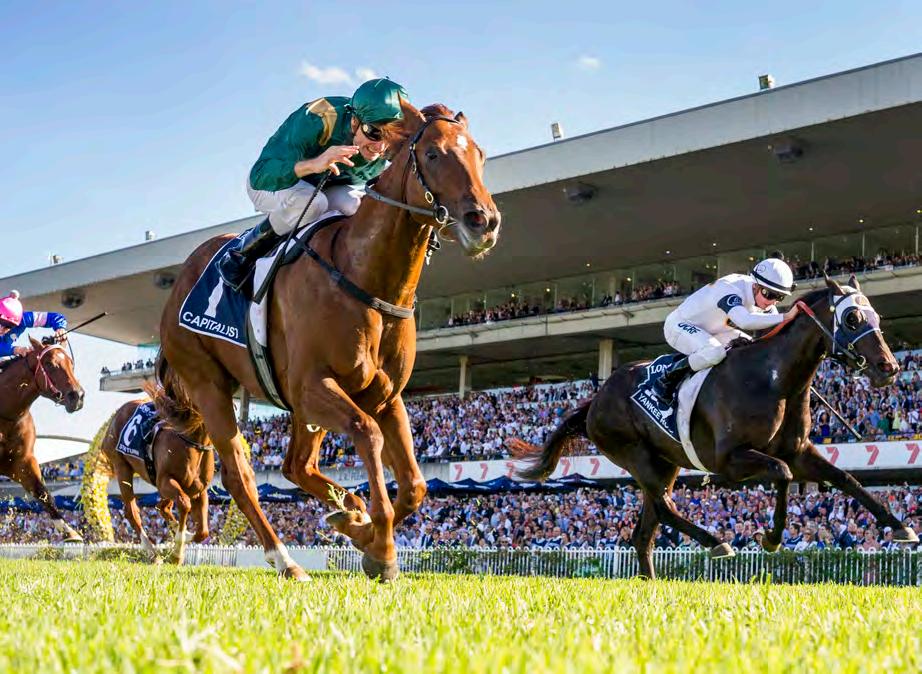
The Golden Slipper
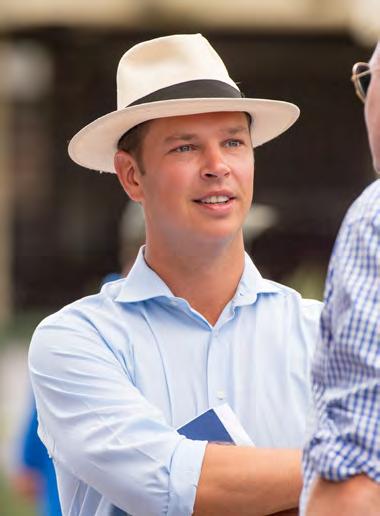
James Harron
THE BLOODSTOCK AGENT
One of the most prominent faces of the Australian racing scene over the last decade has been James Harron, the Northern Irishman who has purchased and brokered deals for some of the top stallion prospects of the last 10 years. Harron tasted success in the 2016 Magic Millions Classic with Capitalist, who became just the third horse to complete the Magic Millions-Golden Slipper double. (Capitalist is also set to have his first crop of yearlings head through the ring during the 2020 Magic Millions Gold Coast Yearling Sale.) For Harron, it is the Golden Slipper’s proven ability to shape the Australian breeding industry that earns his tick as the greatest race.
“There’s no doubt that there are a multitude of factors that go into making a race great,” he says. “For us, being focused on producing stallions, there has to be a great mix of prestige, history and impact on the breed. With that in mind, the obvious choice to tick all of those boxes is the Golden Slipper, which has had an undeniable and longlasting impact upon the Australian thoroughbred.” While Harron admits that it is the history of the Golden Slipper that stands out, he also argues that the lack of history should not discount a race like The Everest from being included in discussions. Harron was one of the race’s 12 inaugural slot-holders, with the contest’s first winner Redzel running in his slot. “I am a firm believer that a race’s prestige and impact on the breed is very much driven by the historical standard of the race - simply put, racing the best and coming out on top,” he says. “With that in mind, I am also a great advocate of any new race that can attract a world-class field, as has certainly been the case with The Everest, and consequently, it is very much a race which should not be underestimated in conversations regarding greatness simply because of a less extensive history. “If there is one thing that is certain it is that racing the best of the best tends to produce the best stallions!”
THE TRAINER
Although trainer John Moore has made his name in one of the world’s toughest racing jurisdictions, Hong Kong, over a stellar 35-year career, his Australian pedigree continues to shine through to this day. Son of George Moore, arguably Australia’s greatest ever rider who has a resume both at home and on the world stage that few can top, the younger Moore is the most prolific trainer in Hong Kong history. However, it is a race that still eludes his family which stands out as the world’s best. “The greatest race for me would have to be the Melbourne Cup,” Moore says. “It’s the race that stops the whole of Australia and much of the world, too. It’s televised worldwide now and it’s become such a big event on the world stage, let alone the history that it has in Australia. It’s the one race that my father never won and, even though I’ve never had a runner in the race, I hope to be able to source a runner or two in the future.
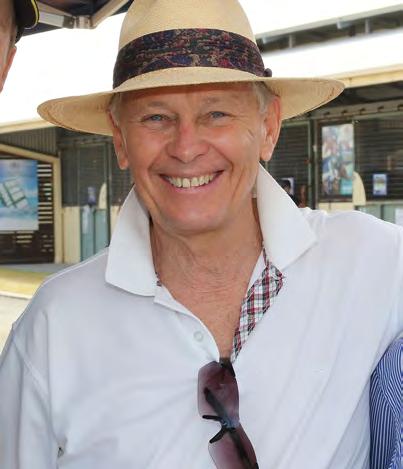
John Moore
“Beyond that, you look at races like the English Derby, which is seen as the historically prestigious race of them all. The Kentucky Derby and the Prix de l’Arc de Triomphe would be on the next rung for me, but I’m very much in the corner of the Melbourne Cup.” The one thing that Moore’s top four races have in common is that they all have long histories, with the Derby first run in 1780, the Melbourne Cup in 1861, the Kentucky Derby in 1875 and the Prix de l’Arc de Triomphe in 1920. They are also all recognised for their social impact beyond the race itself, which the 69-year-old admits is a crucial factor. “For me, the history and the prestige outweighs the money with the truly great races,” he says. “Races like the Melbourne Cup automatically come to mind when you think about that elite tier. They just hold that prestige that sets them apart from other races; they could be worth very little, but they are the races you want to win.”

The Everest
THE JOCKEY
At the other end of the career spectrum is Irish hoop Oisin Murphy, although he is another who has long held dreams of glory. It seems only yesterday that Murphy spent his northern winter in Australia as a wide-eyed 18-yearold apprentice. That summer, a mere six years ago, Murphy rode 13 winners, including the Listed Bagot Handicap (2800m) at Flemington aboard the Nigel Blackiston-trained Outback Joe, a son of the mighty Let’s Elope. Now, Murphy is Europe’s tour de force, winning his first British champion jockey title in 2019 and adding races like the Japan Cup, the Dubai Turf, the Irish Champion Stakes and the Eclipse Stakes to his haul of 15 Group 1 wins. He has also returned to Australian shores for a runner-up finish to Magic Millions graduate Winx in her fourth and final Cox Plate victory, placing aboard Benbatl in 2018.
For the lad from Killarney, though, all roads lead to Epsom and to Longchamp. “Personally, I feel that the Derby and the Prix de l’Arc de Triomphe are the most important races in the world,” he says. “I can’t split them either; to me, they hold equal significance. They define the best horses and create stallions, shaping the breed for the future. Both have captured me since I was a child. “What stands out about both races for me is the prestige. There is only one Derby. There is only one Arc. There may be similar races elsewhere, but they are all aiming to replicate the original. For us in the UK and Ireland, all we dream about winning is the Derby and the Arc.” It does seem that the attraction of history and prestige continues to win out over simply a big prize pool. However, prize money as an incentive is merely the first step towards attracting the best horses. From there, a narrative is built that elevates a race into the prestigious category, from which history naturally follows with the passing of time. These four features essentially define a great race. The lens may be different for each person depending on personal circumstances – like Magnier’s stallion focus or Moore’s family history – but in the end, the focus is the same. So what is the world’s greatest race? Throughout these conversations, many of the same races kept popping up – the Prix de l’Arc de Triomphe, the Derby, the Melbourne Cup, the Kentucky Derby, the Golden Slipper and The Everest all received more than one mention. Which comes out on top? That’s a debate that is set to continue in the years to come.

Oisin Murphy










